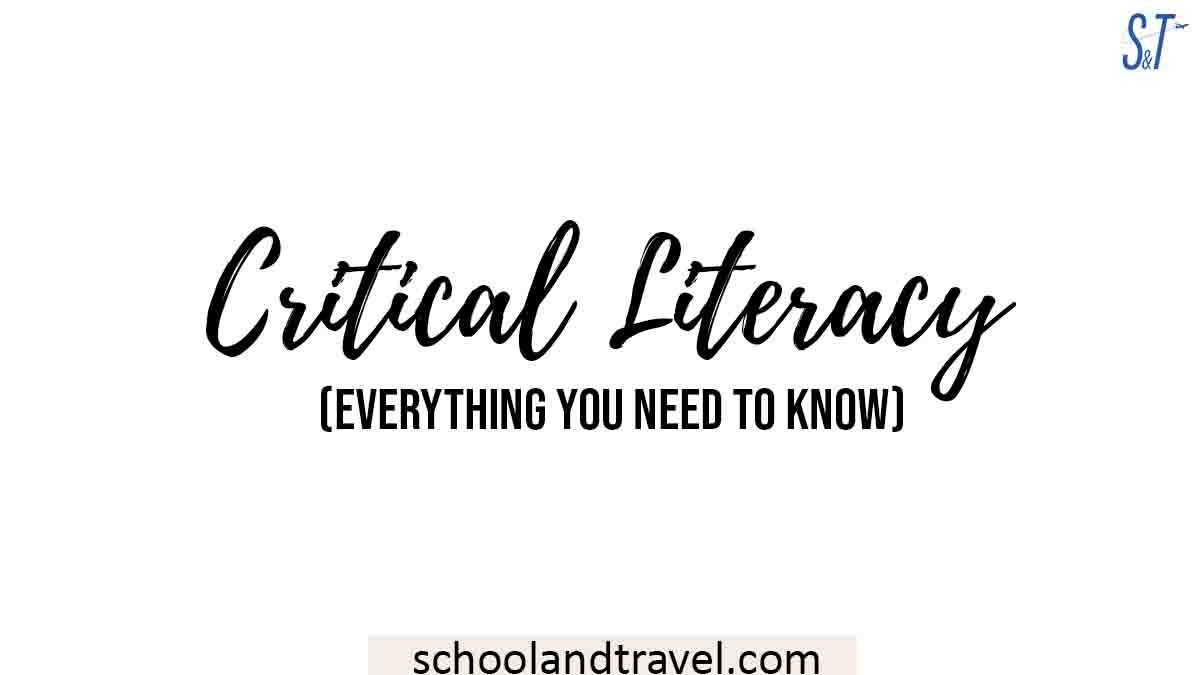Physical Address
#1 Shell Camp Owerri, Nigeria

Critical literacy has a lot of meanings but does not have a particular set of definitions. It is used when a level of discrimination has been found in the media.
Critical literacy analyzes previously written works and the latter, then compares and contrasts to get out some words that were not spoken or other elements on that topic that might have gone unnoticed.
On the other hand, it is also when there is an analyzation of text so that one can find out the relationship between the language used.
Critical literacy can refer to a process where by a text is analyzed critically and evaluated to find out the meaning of the text as it relates to equity, justice and power.
Critical literacy is becoming popular in some parts of the country like Canada, Australia, New Zealand, and the UK.
It can be viewed as a lens or a perspective used to teach across the curriculum not just a topic. Critical literacy teaches students how to read whatever they come across with a critical eye.
Like a biscuit wrapper, billboard, advertisements, invitations, warning signs, etc, they learn to read everything they come across critically as they read it often.
You can do this if you teach students from diverse environments with various cultural practices.
You encourage your students to come to school with various cultural artifacts so they can engage in a deep conversation which will help them see their culture from a critical angle and with a critical eye.
Students tend to learn better when you bring whatever topic you are teaching them home.
They learn better and faster when you ask them about their own personal experiences, relate it to the topic being talked about, then they critically get it evaluated.
This will help them look at every experience of theirs with a critical eye.
Read this: Importance of Scaffolding in Education (Major tips)
Students learn better when they are being taught topics that play important roles in their lives. It is our duty as teachers or as instructors to show our students how to think from a critical angle.
Listen to them talk about the various ways they can implement what they got from that topic into their own personal lives.
The text doesn’t just come from the thin air. They have a source. When you critically analyze a text, it helps you evaluate the text, know the source and the reason why the text was documented.
This will enable you to have a deeper understanding of the text and what information it seeks to pass to its reader.
When we read a text, we draw from our past knowledge and critically compare it with the one we know or let go of the information if it is not useful to us.
A child that engages in critical literacy would know how to make some solid decisions from a young age. Not just decisions on any topic, topics like power, justice, politics, government. This helps them think on their own too.
Critical literacy has to do with reconstructing texts, images, designs into unique ones.
First, select a text where stories are alternated between the lines. A text with conversations about identity, power, social injustice, privileges etc, having these topics would spark up their interests.
Introduce the book to the class and let them guess what the book is all about by looking at the cover and title.
Give them a day to read each chapter, although this can depend on how big the chapter is.
Read this: Academic Probation – Everything you need to know
Ask questions like:
Set the students up for a drama. The drama helps get to their emotional side, so they stop thinking with their head but with their heart now.
Then you have the other talk at the background about what is happening in the drama. This will give ideas about things that were not said in the drama.
Students should get out a piece of writing from the drama acted. It could be poem or just a short note about it.
Then can talk about what they have written down and why they have written down such. Get their feedback during their peer conferences.
This helps the students to be active during the class and not just dormant during the classes. Their interaction during the class goes a long way.
Most people often think that critical thinking is critical literacy, although they might have similar steps, they can not be used interchangeably.
Critical thinking is done when one finds a problem and solves it through logic and mental analysis. When using critical thinking, the evidence must be available and there must be no traces of deception anywhere.
Critical literacy observes and takes notes of the words used by the politicians to state their aim. It lets one challenge the author of the text and the reason behind why the text was written in addition to the sociocultural beliefs behind the text as of the time the text was written.
Read this: Advanced degree – Major tips and facts
Read this: Indirect Instruction (Everything you need to know)
Awesome one, I hope this article answered your question.